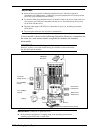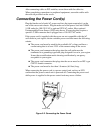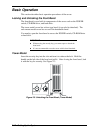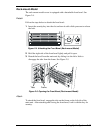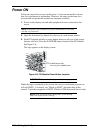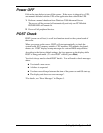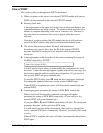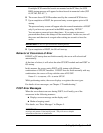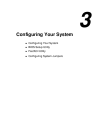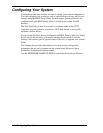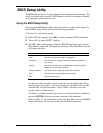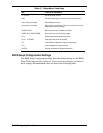
2-16 Setting Up the System
Flow of POST
This section walks you through how POST is performed.
1. When you power on the server, one selected CPU/PCI module will start up.
POST will be performed on this selected CPU/PCI module.
2. Memory check starts.
A message appears at the upper left of the screen to show that the basic and
expanded memories are being counted. The memory check may take a few
minutes to complete depending on the server’s memory size. Likewise, it
may take about one minute for the screen to appear when the server is
rebooted.
Note that if you have replaced the PCI module, the server will perform a
reset of the MAC address, then reboot itself before the memory check.
3. The server starts processor check, IO check, and initialization.
Several messages appear: they show the ID of the selected CPU/PCI
modules, information on the processor, detection of the keyboard and
mouse, etc.
4. A message appears at the lower left of the screen, prompting for startup of
the BIOS setup utility “SETUP.”
Press <F2> to enter SETUP
You will need to start it when you want modify the configuration for using
the server. Unless this message appears together with an error message, you
don't need to start the utility to modify the configuration. (If you wait for a
few seconds, POST will go on automatically.)
To start the SETUP utility, press F2 while the above message is displayed.
For setting and parameter functions, see the section of BIOS setup.
When SETUP is completed, the server will reboot itself automatically and
perform POST.
5. A message appears prompting for startup of SCSI BIOS setup utility.
When a built-in SCSI controller is detected, a message will appear
prompting for startup of SCSI BIOS setup utility. (If you wait for a few
seconds, POST will go on automatically.)
If you press Ctrl + Q, the SCSI BIOS setup utility will start. For setting and
parameter functions, see the section on SCSI setup.
You will need to use this utility, for example, when you have changed the
server’s internal SCSI device connections. However, you usually don’t need
to use it.
When SETUP is complete, the server will reboot automatically and perform
POST again.





